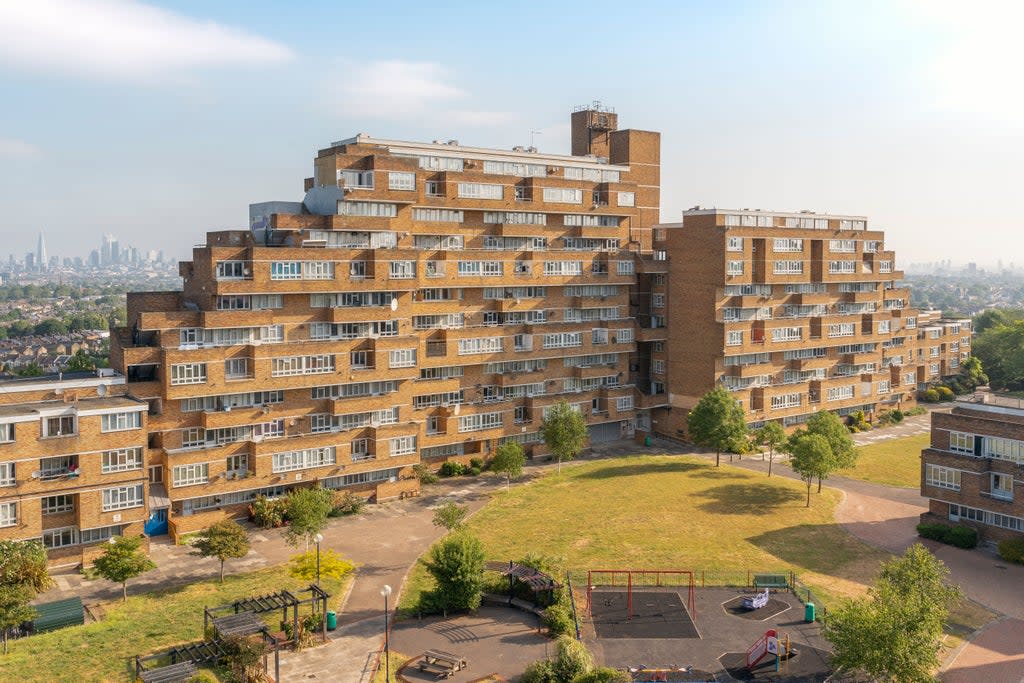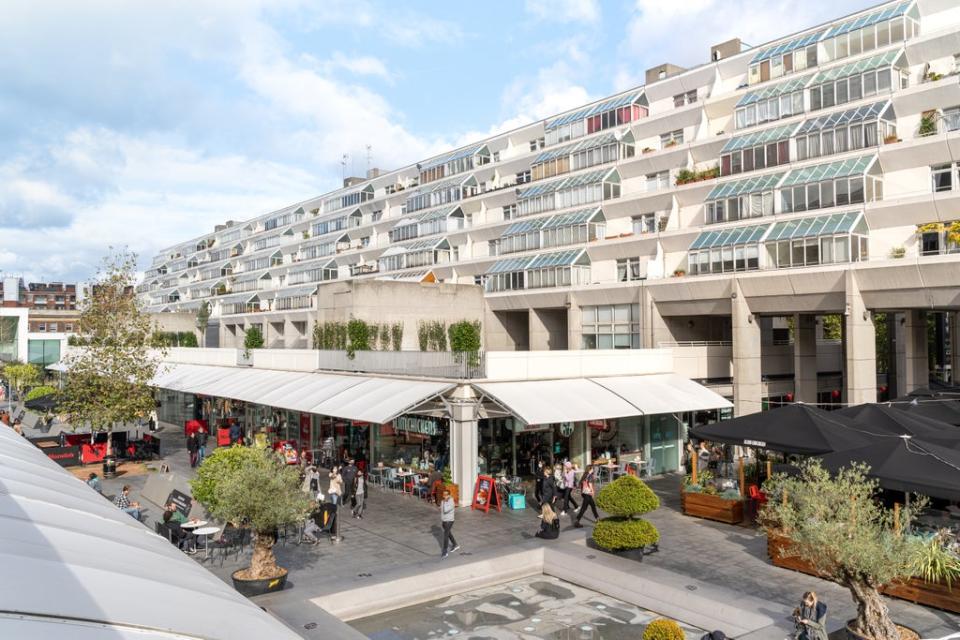London’s unsung social housing architecture gets a fresh look in new book The Council Estate

In London, some council estates have achieved celebrity status. When Erno Goldfinger’s Balfron Tower in Poplar was controversially turned into private flats, the marketing suite even sold tote bags branded with an image of the Modernist high-rise.
But hidden away in the capital are hundreds of lesser-known estates just as architecturally significant, if not all as well preserved. These “undermined and underfunded” buildings are now being celebrated in a new book by south London photographer Jack Young.
Young, a product designer, spent years scouring every inch of the capital to find its most photogenic housing projects. His collection of 68 photos forms a new collection, The Council House, featuring personal interviews with residents and insights into the buildings’ designs.
“I hope that by championing the hidden beauty in some of the estates featured, that the book might challenge negative perceptions that people may have towards council housing and its architecture,” said Young.
“Too often these estates are depicted as backgrounds to gritty television dramas or encapsulated in imposing black and white photography.”
The project is timely, with the UK currently enjoying something of a council housing revival. After decades of inactivity due to lack of funding, the last few years have seen a slow but steady growth in local authority-backed housebuilding. In 2019, the Stirling Prize for the UK’s best new building went to a council housing project for the first time, Goldsmith St in Norwich designed by Mikhail Riches Architects.

In the capital, architect Peter Barber has also won plaudits for his inventive social housing projects such as a cluster of townhouses designed for Newham Council, and a 33-home mansion block in Southwark. This week Sadiq Khan hailed the “resurgence” of council housebuilding in London, announcing the number of homes started annually had increased six-fold, with work beginning on over 11,000 homes since 2018.
It reverses years of decline, though still falls short of the highs seen in the post-War years, where annual completions averaged around 126,000.
Young’s photographs mostly celebrate the golden era of social housing in the 1960s and 70s, when many London councils had ambitious, idealistic, in-house architecture teams designing housing on a large scale.
The book highlights gems like Holmefield House, just around the corner from Goldfinger’s Trellick Tower in west London.
The tiled 1967 housing estate was designed by Julian Keable & Partners with porthole windows and mock-classic pillars and was commissioned by the now-disbanded Kensington Metropolitan Borough Council.
In Roehampton, Young lands on the slab towers of Alton West, part of the Alton Estate which forms one of the UK’s largest housing projects with over 13,000 residents. Some buildings on the wider estate are currently due to be demolished under controversial plans by Wandsworth Council.
Meanwhile on a Dulwich hilltop the 300-flat Dawson’s Heights overlooks swathes of south-east London.
It was designed by Kate Macintosh for Southwark Council when she was just 28 years old. Completed in 1972, each flat has a balcony, which Macintosh fought to include by justifying each as a fire escape.
Young also captures smaller details, such as an impressive curved slide designed in a children’s play area on Westminster’s Brunel Estate.

One of the UK’s only pieces of play equipment to be Grade II listed, the slide cascades down a huge brick wall. Young describes the estate as a “masterclass in balancing heavy architecture with quiet moments of urban respite.”
Other such moments include a staircase in Skinner, Bailey and Lubetkin’s Bevin Court in Islington or the multi-coloured stained glass windows of Trellick Tower which, Young writes, bathes the tower’s foyer in “euphoric light” as if entering a concrete cathedral.
The Trellick stained glass is one of Young favourite images, offering a “glimpse into the lesser-known depths of the concrete behemoth, a world usually belonging exclusively to its residents.”
Young added: “Council housing is as much a part of London as Big Ben or Buckingham Palace, yet for years it has been overlooked, undervalued and at worst actively avoided by many.
“This book looks to flip the script. By showcasing the beauty and individualism in these socially vital buildings the book aims to challenge stereotypes as we look to restore some of the rightful pride that was originally felt towards them.”
The Council House by Jack Young is published by Hoxton Mini Press.

 Yahoo News
Yahoo News 
